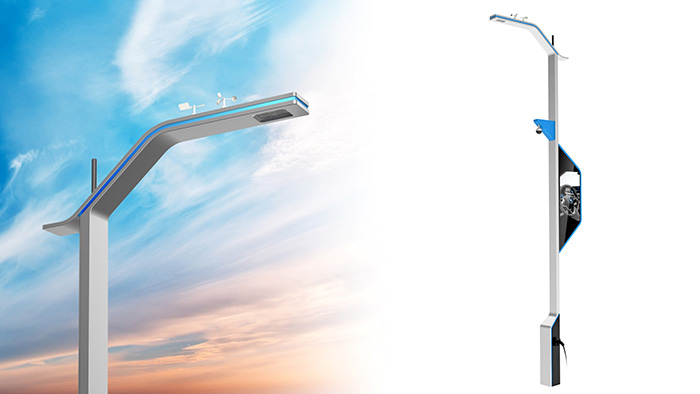In 2019, 5G has become a battleground for countries around the world to compete in the technological competition, and smart light poles are a new generation of urban information infrastructure that includes charging piles, video surveillance, environmental monitoring, light pole screens and other modules. Not only is it responsible for the breakthrough in smart city construction, it will also become an important part of future 5G base station construction.


In the development blueprint of smart cities, street lights will be the central nervous system for transmitting information in the city. A report released by the American Wireless Communications and International Network Association (CTIA) in 2017 pointed out that urban street lights will be an important infrastructure in the 5G era.
However, it is understood that the current distance between urban street lights is about 20 to 30 meters, while the distance between 5G base stations is about 100 to 200 meters. In other words, not every street light needs to be equipped with a base station and must be adjusted according to coverage requirements.
In addition, the government owns the property rights of street light poles. When base stations are placed on light poles, due to the increase in current, the old light poles must undergo cable reorganization, power system configuration and other projects. However, load capacity, wind resistance and mechanical structure stability, etc. Content must also be taken into consideration.
When various monitoring devices begin to be hung on street light poles, such as environmental monitoring, monitoring equipment, and Internet of Things devices, without a complete integration plan, various “hermit crabs” will appear attached to the light poles. What will happen at this time? Taking into account the urban landscape will also become an important issue.
It is worth discussing that the promotion of smart cities does not necessarily require 5G. Although the basic functions of smart street lights currently need to be connected to the Internet, whether it is real-time traffic flow or safety monitoring, environmental monitoring and other functions, through 4G LTE with NB-IoT ( Narrowband Internet of Things) technology is still sufficient for application. In other words, the implementation of smart cities and 5G cannot just be taken for granted. The biggest problem in implementing 5G is whether the image transmission speed can be greatly improved. However, if it is difficult to find a suitable business model, it will be difficult to recover the huge investment.
Although the outside world is full of wonderful imaginations about 5G and smart cities, the reality is that government funds and budgets are limited. After small-scale pilot introduction, if you want to carry out large-scale and comprehensive promotion, you must first solve the problem of who will pay and How to recover costs. What kind of substantial benefits can urban intelligence bring and how much money can the government save are also issues we are facing at this stage.
In addition, the key to 5G advancement lies in the attitude of telecom operators. The dilemma faced by operators today is: 4G penetration has reached saturation, and as the growth of smartphones slows down, it is difficult for voice calls or Internet charges to bring revenue growth momentum. The 5G effect will bring about a new wave of phone replacements. Trends and application demand are regarded as market specific medicines, but 5G investment funds are huge, and the payback period in the future is unpredictable. When the infrastructure is completed, what kind of business model will be used to make profits, the prospects are still unclear at present.
Smart cities cannot be just castles in the air or limited to small-scale test scenarios. The benefits of smart networking and urban transformation brought by 5G can be seen and expected. However, the transformation of smart light poles must first solve the era-changing problem of infrastructure. At the same time, It also needs to be paired with 5G technology and a mature commercial operation environment to obtain generous returns.